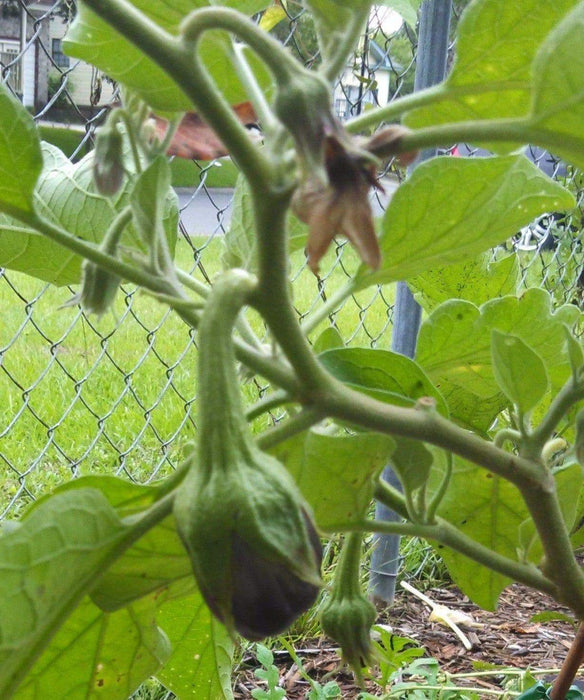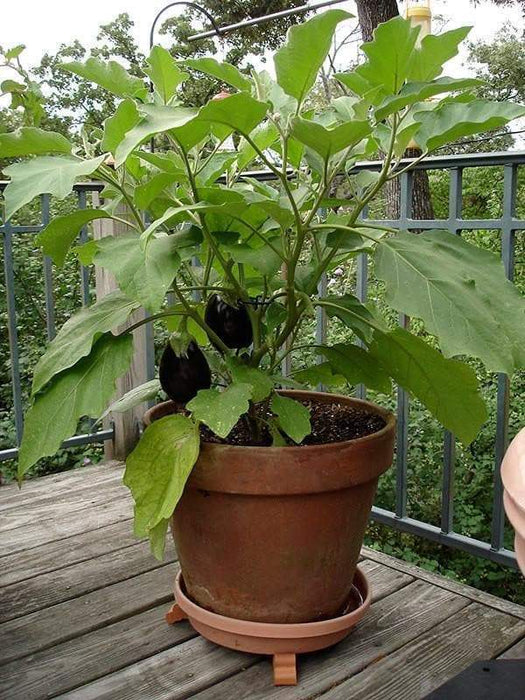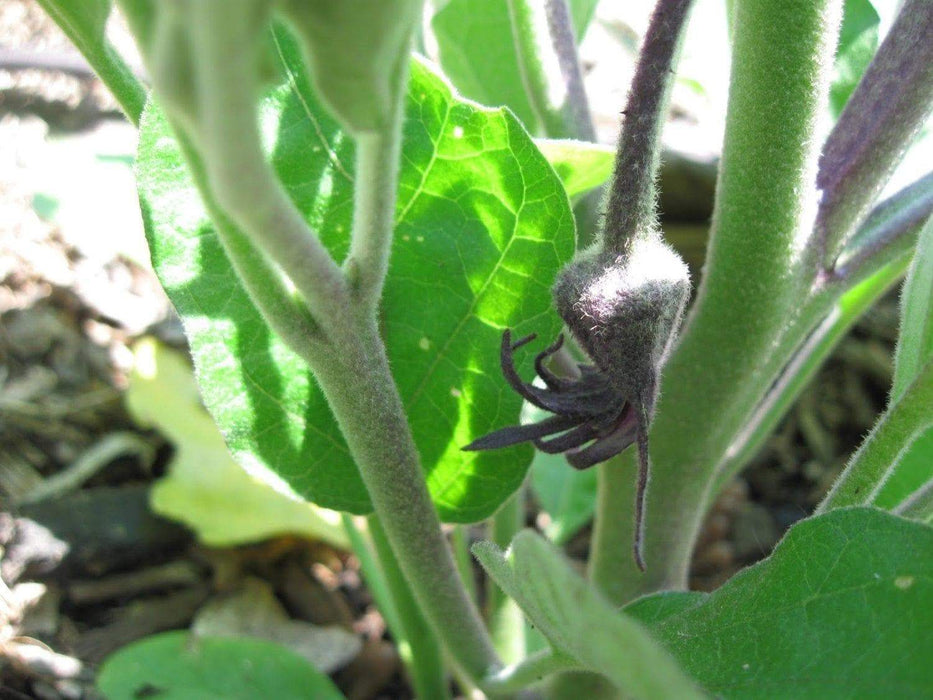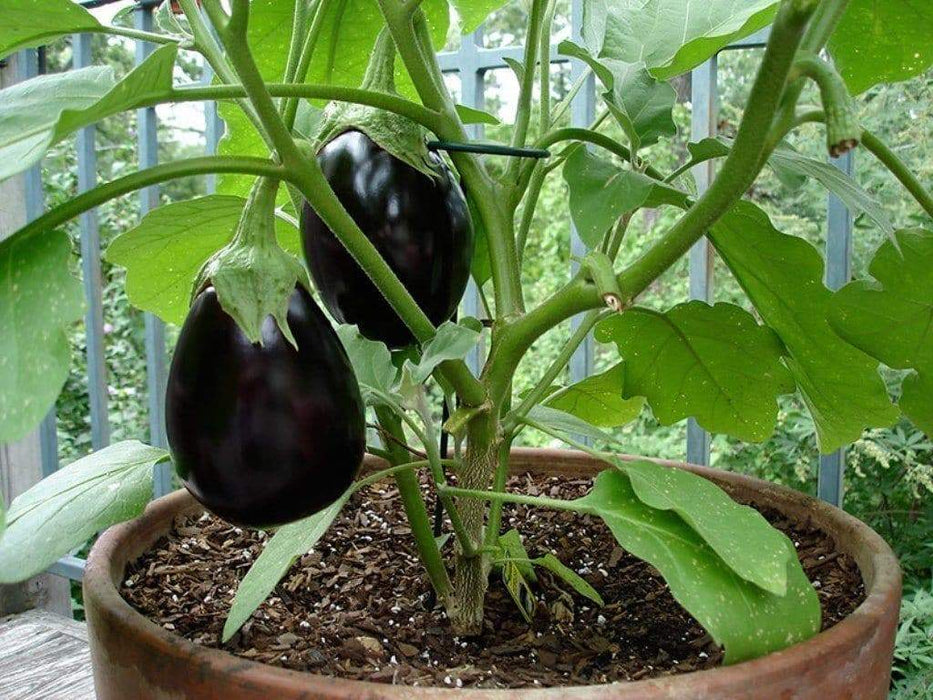
Black Beauty Eggplant Seeds, HEIRLOOM Vegetable
Original price
$ 2.13
-
Original price
$ 32.93
Original price
$ 2.13
$ 2.13
-
$ 32.93
Current price
$ 2.13
Most orders are processed by the next day
Select your desired size and/or color from the available options.
Eggplant Seeds - 'Black Beauty' Organic HEIRLOOM Seeds- (Solanum melongena)
Solanum melongena.
Black Beauty forms a large, drop-shaped fruit perfect for slicing. Thinking eggplant parmesan?
A beautiful vegetable with lovely lavender blossoms, Black Beauty is pretty enough to grow in the flower garden. Homegrown eggplant is far superior to store bought. Outstanding when harvested at their succulent peak, the skin is tender, so no need to peel it. A widely used international food; there are countless recipes from Italy to China to Russia and beyond.
Vegetable Seeds Per Oz: 6500
Vegetable Description:
Eggplant appears to be a very ancient fruit; the earliest references to it can be found in Chinese and Indian records. Though usually considered a vegetable, botanists classify eggplant as a berry. Early varieties of eggplant were named for their resemblance to large white eggs; in Europe, eggplant is usually referred to as aubergine. In medieval times eggplant were called mad apples, because they were thought to induce insanity. Experimental horticulturist Thomas Jefferson included varieties of eggplant in his gardens; at the time, growers used eggplant mostly for decorative purposes. Regions of southern and eastern Asia especially appreciate the eggplant, naming it "king of vegetables" and making it a staple of their cuisine. In addition to the traditional purple pear-shape of Black Beauty, eggplant comes in all shapes, sizes, and colors. Black Beauty is one of the earliest and best known American varieties of eggplant, dating from the early 1900s.
When to sow outside:
2 to 4 weeks after average last frost and when soil temperatures are warm and when outside nighttime temperatures are at least
55°F.
When to start inside:
RECOMMENDED. 10 to 12 weeks before average last frost. Transplant seedlings outside 1 to 2 weeks after last frost.
Harvesting: All eggplant varieties should be harvested when fruit is shiny and before skin turns dull. Continual harvest will encourage more production. Harvest at about 6" long. Cut woody stem with pruners. If seeds inside are dark, fruit is past its prime but still edible.
Select your desired size and color from the available option
Solanum melongena.
Black Beauty forms a large, drop-shaped fruit perfect for slicing. Thinking eggplant parmesan?
- 80 days from transplanting.
- Light: Full sun
- Fruit size: Up to 8 inches long
- Matures: 80 days
- Plant spacing: 24 to 36 inches apart
- Plant size: 3 to 4 feet tall
A beautiful vegetable with lovely lavender blossoms, Black Beauty is pretty enough to grow in the flower garden. Homegrown eggplant is far superior to store bought. Outstanding when harvested at their succulent peak, the skin is tender, so no need to peel it. A widely used international food; there are countless recipes from Italy to China to Russia and beyond.
Vegetable Seeds Per Oz: 6500
Vegetable Description:
Eggplant appears to be a very ancient fruit; the earliest references to it can be found in Chinese and Indian records. Though usually considered a vegetable, botanists classify eggplant as a berry. Early varieties of eggplant were named for their resemblance to large white eggs; in Europe, eggplant is usually referred to as aubergine. In medieval times eggplant were called mad apples, because they were thought to induce insanity. Experimental horticulturist Thomas Jefferson included varieties of eggplant in his gardens; at the time, growers used eggplant mostly for decorative purposes. Regions of southern and eastern Asia especially appreciate the eggplant, naming it "king of vegetables" and making it a staple of their cuisine. In addition to the traditional purple pear-shape of Black Beauty, eggplant comes in all shapes, sizes, and colors. Black Beauty is one of the earliest and best known American varieties of eggplant, dating from the early 1900s.
When to sow outside:
2 to 4 weeks after average last frost and when soil temperatures are warm and when outside nighttime temperatures are at least
55°F.
When to start inside:
RECOMMENDED. 10 to 12 weeks before average last frost. Transplant seedlings outside 1 to 2 weeks after last frost.
Harvesting: All eggplant varieties should be harvested when fruit is shiny and before skin turns dull. Continual harvest will encourage more production. Harvest at about 6" long. Cut woody stem with pruners. If seeds inside are dark, fruit is past its prime but still edible.
Select your desired size and color from the available option
LET OUR CUSTOMER SPEAK FOR US
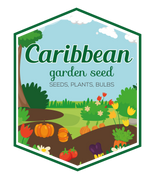
![[Seeds] - Caribbeangardenseed](http://caribbeangardenseed.com/cdn/shop/files/gift-card-gift-card-1_1024x1024_dfa857db-9150-4315-a362-7f0bb3fb9c47_60x28.png?v=1703978838)
